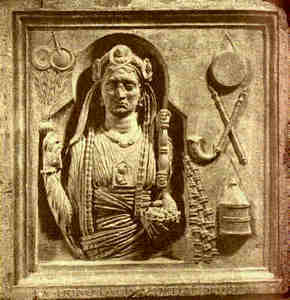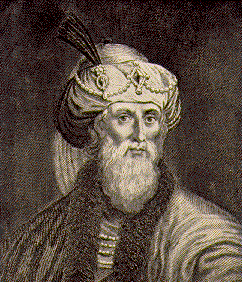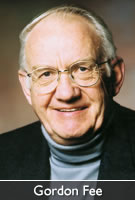Most Christians for 2000 years did NOT define malakoi to mean gay
Define malakoi - In the Bible malakoi
NEVER refers to homosexuality.
 |
We demonstrated in our first study of malakoi that this Greek word usually referred to intellectual or moral weakness or softness which implied effeminacy or signified shrine prostitutes but was rarely if ever used to describe gay, lesbian or transgendered people. Widespread false teaching about the meaning of malakoi still roils the water and troubles the body of Christ in the twenty first century.
Jewish scripture helps
us define malakoi
- Jewish scripture, Proverbs 7:10, links physical appearance to harlotry by describing an adultress as "a woman with the attire of an harlot," (KJV) and also when describing Queen Jezebel's hair and makeup.
”And when Jehu was come to Jezreel, Jezebel (Israel’s pagan Queen) heard of it; and she painted her face (put on makeup), and tired her head (styled her hair), and
looked out at a window.” 2 Kings 9:30 - The prophet Jeremiah uses crimson clothing, gold jewelry and makeup as metaphors for spiritual adultery, describing Israel’s attempts to entice her lovers.
“And when thou art spoiled, what wilt thou do? Though thou clothest thyself with crimson, though thou deckest thee with ornaments of gold, though thou rentest thy face with painting, in vain shalt thou make thyself fair; thy lovers will despise thee, they will seek thy life.” Jeremiah 4:30
- Ezekiel links worship of Molech and Israel’s spiritual adultery, to wearing eye makeup and ornamental jewelry, and with men of the common sort, who wear bracelets and crowns, Ezekiel 23:37-43.
- Jesus Christ Himself showed John the Apostle in the book of Revelation 1:1, that end times religion will be harlot religion, Revelation 17:3-5. Truth rejecting religion is called a harlot who is identified as "THE MOTHER OF HARLOTS" in the KJV, Rev 17:5 (and yes, the words are all capitalized in the KJV).
- Tertullian warned Christian women not to paint their face like a harlot and not to wear a har-lot's jewelry.
"Draw your whiteness from simplicity, your ruddy hue from modesty. Paint your eyes with bashfulness, and your mouth with silence. Implant in your ears the words of God and place around your necks the yoke of Christ." Tertullian, AD 160-220, 4.25.
See Defending Tertullian for more information about this early Christian preacher.
- The Bible and early Christians did not link the Greek word, malakoi, to being gay and lesbian or bisexual or transgendered.
How did Jesus define
malakoi or malakos?
 |
The teaching of Jesus
In the Bible, Jesus never used the Greek word malakoi to refer to or describe gays, lesbians, bisexuals and transgendered people. Jesus used malakos, (the singular of malakoi) in Matthew 11:8 and Luke 7:25, to describe soft luxurious clothing worn by rich people.
”But what went ye out for to see? A man clothed in soft raiment? (malakos) behold, they that wear soft clothing (malakos) are in king’s houses.” - Matthew 11:8.
“But what went ye out for to see? A man clothed in soft raiment? (malakos) Behold, they which are gorgeously apparelled, and live delicately, are in king’s houses.” - Luke 7:25.
How did Clement define
malakoi or malakos?
 |
Clement of Alexandria, AD 150-215,
a Christian preacher, gives us insight from the second century, into how early Christians viewed colorful clothing, effeminacy and makeup.
Effeminacy in New Testament times usually had nothing to do with homosexuality or with being gay. In New Testament times, malakoi or effeminacy equated with harlotry and shrine prostitution and often described a heterosexual, vainly obsessed with appearance.
Clement clearly equates the softness of luxurious, finely made, brightly colored clothing, facial makeup and excessive attention to one’s hair, by women and men, with harlotry but not with homosexuality. Thus, Clement’s use of the malakos word group agrees with the Biblical witness of the Old Testament and with Jesus’ use of malakos in the New Testament.
 |
Wildflowers in
the Galilee
Clement would define
malakoi this way
“[W]hat are we to imagine ought to be said of love of ornament, and dyeing of wool, and variety of colours, and fastidiousness about gems, and exquisite working of gold, and still more, of artificial hair and wreathed curls; and furthermore, of staining the eyes, and plucking out hairs, and painting with rouge and white lead, and dyeing of the hair, and the wicked arts that are employed in such deceptions...
I admire that ancient city of the Lacedaemonians which permitted harlots alone to wear flowered clothes, and ornaments of gold, interdicting respectable women from love of ornament, and allowing courtesans alone to deck themselves. [Courtesans were high priced female prostitutes, mistresses for rich men].
On the other hand, the archons [male rulers] of the Athenians, who affected a polished mode of life, forgetting their manhood, wore tunics reaching to the feet, and had on the crobulus - a kind of knot of the hair - adorned with a fastening of gold grasshoppers, to show their origin from the soil, forsooth, in the ostentation of licentiousness. Now rivalry of these archons extended also to the other Ionians, whom Homer, to show their effeminancy, calls "Long-robed...
For if the female sex, on account of their weakness, desire more, we ought to blame the habit of that evil training, by which often men reared up in bad habits become more effeminate than women...
they [women] may be permitted to use softer clothes, provided they put out of the way fabrics foolishly thin, and of curious texture in weaving; bidding farewell to embroidery of gold and Indian silks and elaborate Bombyces [silks]...
For these superfluous and diaphanous materials are the proof of a weak mind, covering as they do the shame of the body with a slender veil. For luxurious clothing, which cannot conceal the shape of the body, is no more a covering. For such clothing, falling close to the body, takes its form more easily, and adhering as it were to the flesh, receives its shape, and marks out the woman's figure, so that the whole make of the body is visible to spectators, though not seeing the body itself."
Clement, The Instructor, Book II, Chapter 11, On Clothing.
Clement's words are absolutely clear
Let's allow Clement to further define malakoi.
“decoration makes women courtesans [prostitutes], and men effeminate and adulterers... they become effeminate, cutting their hair in an ungentlemanlike and meretricious way [meretricius is Latin, indicating a prostitute who attracts attention in a vulgar manner], clothed in fine and transparent garments, chewing mastich, smelling of perfume.
What can one say on seeing them? Like one who judges people by their foreheads [Jeremiah 3:3 - “thou hadst a whore’s forehead, thou refusedst to be ashamed,” Jeremiah 6:15, 8:12, Revelation 17:5], he will divine them to be adulterers and effeminate, addicted to both kinds of venery, haters of hair, destitute of hair, detesting the bloom of manliness [facial hair and body hair], and adorning their locks like women... those who take out hair by pitch-plasters, shave, and pluck out hairs from these womanish creatures...
Such are those addicted to base passions, whose whole body is made smooth... But for those who are men to shave and smooth themselves, how ignoble! As for dyeing of hair, and anointing of grey locks, and dyeing them yellow, these are practices of abandoned effeminates; and their feminine combing of themselves is a thing to be let alone.”
Clement, The Instructor, Book III, Chapters 2-3, On Drinking & On Costly Vessels.
Clement did not define malakoi as gay, lesbian, bisexual, queer or transgendered.
How did Paul define
malakoi or malakos?
 |
The Apostle Paul by Rembrandt
Clement used and defined malakos the way Jesus used and defined the word. The apostle Paul did not define malakoi to mean homosexuality. Instead, Paul used malakoi in precisely the same way Jesus and Clement used the malakos stem. It does not make sense that Paul used the word malakoi with a meaning completely different from the meaning Jesus and Clement gave the word.
It does not make sense to insist that Paul would define malakoi in a way none of his first century readers would understand, as a universal con-demnation of all homosexual practice. When we define malakoi, we must remember that no author in ancient Greek literature used malakoi as an all-encompassing term to describe homosexual practice or to describe gays and lesbians. Remember the most basic rule for interpreting scripture.
Scripture cannot mean NOW
what it did not mean THEN.
Paul did not intend his readers to understand his use of malakoi to mean a proscription of all homosexual practice. That false interpretation of 1 Cor 6:9 is a twenty-first century spin which could not possibly have been the meaning of malakoi in the first century. Paul did not define malakoi as meaning gay or homosexual when he used it. Had he wanted his readers to know he was blasting and condemning gays and lesbians, there are many words Paul could have used. In fact, since Paul had already used the word pornoi, meaning male prostitutes in this 1 Cor 6:9 vice list, he must have intended to define malakoi as meaning something other than common male street prostitutes.
The word malakoi, as Paul used it, conveyed the idea of moral weakness, love of fine clothing and jewelry, dressing like a harlot, spiritual and physical adultery, love of luxury or excessive pursuit of heterosexual sex and shrine prostitution. We must be accurate when we define malakoi. Malakoi was on rare occasions, used as an epithet to describe a male prostitute. Yet that usage was not the predominate meaning of malakoi and did not indicate general homosexual practice.
How would George Rawlinson
define malakoi or malakos?
 |
George Rawlinson, 1812-1902
When we define malakoi and other Greek words used in the Bible, our definition must always fit the cultural and historical reality at the time the words were used. It is dishonest to read our twenty first century understanding back into the New Testament which was written two thousand years ago.
George Rawlinson, 1812-1902, Professor of Ancient History at Oxford University, in History of Phoenicia, remarks on the effeminate Galli priests who served the fertility goddess. These effeminate men made themselves like women through castration, wearing female clothing, female make up and long hair like a woman.
In plainer words, when Rawlinson wants to define malakoi, he relates it to specific kinds of sexual sin, frequently practiced by heterosexuals. The word malakoi was never used in the Bible or in the ancient Greek language, as a general term to condemn all homosexuals.
 |
Bas relief of an ancient Galli priest
Galli priests served the pagan fertility goddess, not the God of the Bible.
Rawlinson is careful to accurately define malakoi by equating Galli priests with the KJV's sodomites, the qadesh of the Hebrew text.
“One fruit of this system was the extraordinary institution of the Galli. The Galli were men, who made themselves as much like women as they could, and offered themselves for purposes of unnatural lust to either sex [anal intercourse to worship the fertility goddess]. Their existence may be traced in Israel and Judah, [1 Kings 14:24, 15:12] as well as in Syria and Phoenicia.
At great festivals, under the influence of strong excitement, amid the din of flutes and drums and wild songs, a number of the male devotees would snatch up swords or knives, which lay ready for the purpose, throw off their garments, and coming forward with a loud shout, proceed to castrate themselves openly.
They would then run through the streets of the city, with the mutilated parts in their hands, and throw them into the houses of the inhabitants, who were bound in such case to provide the thrower with all the apparel and other gear needful for a woman. This apparel they thenceforth wore, and were recognised as attached to the worship of Astarte, entitled to reside in her temples, and authorised to take part in her ceremonies.
They joined with the priests and the sacred women [qedesha] at festival times in frenzied dances and other wild orgies, shouting, and cutting themselves [as the prophets of Baal in 1 Kings 18:19, 28] on the arms, and submitting to be flogged one by another.
At other seasons they "wandered from place to place, taking with them a veiled image or symbol of their goddess, and clad in women's apparel of many colours, and with their faces and eyes painted in female fashion, armed with swords and scourges, they threw themselves by a wild dance into bacchanalian ecstasy, in which their long hair was draggled through the mud...” George Rawlinson, History of Phoenicia, Chapter 11.
How did Josephus
define malakoi or malakos?
 |
Josephus the Jewish Historian.
Josephus, AD 37-101, regarded castrated eunuchs as effeminate. He did not define malakoi as gay or lesbian but did define it as effeminate in the sense of Galli priests who castrated themselves to serve the fertility goddess.
“40. Let those that have made themselves eunuchs be had in detestation; and do you avoid any conversation with them who have deprived themselves of their manhood, and of that fruit of generation which God has given to men for the increase of their kind: let such be driven away, as if they had killed their children, since they beforehand have lost what should procure them; for evident it is, that while their soul is become effeminate, they have withal transfused that effeminacy to their body also.” - Josephus, Antiquities of the Jews, 4.8.40.
How did John Calvin
define malakoi or malakos?
 |
John Calvin, vicious Protestant Reformer,
did not hesitate to preside over the killing of people with whom he had doctrinal differences. Yet as vicious as he was, Calvin did not understand malakoi, as used by Paul, to mean gay, lesbian or bisexual. Instead, Calvin, 1509-1564, certainly not a gay apologist, linked malakoi-effeminate to speech, gesture and apparel, not to homosexuality, not to lesbians, not to gay men. Here is what John Calvin wrote about malakoi.
“By effeminate persons I understand those who, although they do not openly abandon themselves to impurity, discover, nevertheless, their unchastity by blandishments of speech, by lightness of gesture and apparel, and other allurements.”
Calvin’s Commentary On 1 Corinthians, 6:9, John Calvin.
How did John Gill
define malakoi or malakos?
 |
John Gill, the great English Baptist expositor
John Gill, 1697-1771, did not understand malakoi, as used by Paul, to indicate homosexuality. Gill wrote that malakoi referred to those who commit the sin of Onan, Genesis 38:8-9, which back then, signified masturbation, not being gay or lesbian.
John Gill disagreed with almost every modern preacher who uses 1 Cor 6:9 to preach against gays and lesbians. If you define malakoi to mean homosexual, you should ask yourself why John Calvin and John Gill and most preachers since Paul wrote 1 Corinthians disagree with you on that. Here is how John Gill defined the Greek word, malakoi.
Nor effeminate “or "soft," or, as the Syriac renders it, "corrupters;" that is, of themselves, by volun-tary pollution, such as are guilty of the sin of Onan, (Genesis 38:8,9).”
John Gill, Exposition of the Bible, Comment on 1 Cor 6:9.
How did Albert Barnes
define malakoi or malakos?
 |
Albert Barnes the American Presbyterian Bible expositor
Albert Barnes, 1798-1870, understood malakos, in Matthew 11:8, to refer to effeminacy, not to being gay or lesbian, not to being bisexual, not to homosexuality.
“Clothed in soft raiment. The kind of raiment here denoted was the light, thin clothing worn by effeminate persons... This kind of clothing was an emblem of riches, splendour, effeminacy, feebleness of character.”
Barnes, Notes, Comments on Matthew 11:8.
Commenting on malakoi in 1 Cor 6:9, Barnes is of two minds when he attempts to define malakoi. First, he agrees with his assessment of the meaning of malakos in Matthew 11:8.
“Applied to morals, as it is here [I Cor 6:9], it denotes those who give themselves up to a soft, luxurious, and indolent way of living; who make self-indulgence the grand object of life; who can endure no hardship, and practise no self-denial in the cause of duty and of God.”
Then, Barnes changes his mind and asserts that the connection in Paul’s vice list “seems to demand” the interpretation that malakoi refers to pederasty, [a specific form of same sex practice] which was common among the Greeks and to a lesser extent, among the Romans in Paul’s day.
“The word is applied in the classic writers to the Cinaedi, the Pathics, or Catamites; those who are given up to wantonness and sensual pleasures, or who are kept to be prostituted to others. Diog. Laer. vii. 5, 4; Xenoph. Mem. iii. 7, 1; Ovid, Fast. iv. 342. The connexion here seems to demand such an interpretation, as it occurs in the description of vices of the same class - sensual and corrupt indulgences. It is well known that this vice was common among the Greeks - and particularly prevailed at Corinth.” - Barnes, Notes, Comments on 1 Corinthians 6:9.
How did Alan Redpath,
Pastor of Moody Memorial Church, define malakoi?
 |
Alan Redpath, pastor of Moody Memorial Church,
Alan Redpath, 1907-1989, conservative evangelical author, did not define malakoi, as used by Paul, to mean being gay or lesbian. Instead he writes that “soft” is the literal meaning of malakoi. “Soft” in Redpath’s opinion, indicates believers who are tolerant of sin, arguing among themselves, bogged down by fleshly lifestyles.
This prominent Chicago pastor says nothing about homosexuality in defining the meaning of malakoi. Speaking of soft, effeminate Christians, Redpath decries the way they co-mingle the world and Christianity in their lives.
Define malakoi. “There is no clear line of demarcation; they love being coddled and they do not like being challenged.”
Alan Redpath, The Royal Route To Heaven, Studies In First Corinthians, Moody, Chicago, 1960, p. 70-71.
Redpath understood malakoi to describe self-indulgent worldly Christians, not homosexuality.
How did Dr. Gordon Fee
define malakoi or malakos?
 |
Dr. Gordon Fee, a leading expert on New Testament textual criticism,
admits that malakoi, as used by Paul, rarely, if ever, indicated homosex-uality. Dr. Gordon Fee, General Editor of the New International Commentary On The New Testament and a leading expert on New Testament textual criticism, informs us that malakoi carries the basic meaning of soft or effeminate.
Dr. Fee’s opinion, that malakoi in 1 Cor 6:9 refers to the younger, “passive” partner in a pederastic relationship is, in his own words, “a best guess” about what Paul meant. Dr. Fee critiques his own opinion by pointing out that there was a technical word in the Greek language to describe such men and
"malakos is seldom, if ever so used. Since it is not the ordinary word for such homosexual behavior, one cannot be sure what it means in a list like this."
According to this leading heterosexual evangelical New Testament scholar, one cannot be sure what malakoi means in Paul's 1 Cor 6:9 vice list. That statement of doubt is not from a gay man or from someone who affirms gays and lesbians. It is from a renowned expert on the Greek language. According to Dr. Fee, his opinion that malakoi means the younger partner in a homosexual relationship is nothing more than “a best guess.”Gordon D. Fee, The First Epistle To The Corinthians, Eerdmans, Grand Rapids, 1991, p. 244.
How should Christians
define malakoi and malakos?
Based on these citations from world-class Christian scholars, most of whom did not define malakoi to mean gay, lesbian, bisexual or transgendered, it should be clear that Christians who define this word differently today are way off-base. There is not one shred of cultural doctrinal historical or linguistic evidence to support the modern spin on the meaning of the Greek word, malakoi. For the last 2000 years, most Christians who wrote on 1 Cor 6:9 did not view malakoi as a reference to homosexuality. Are you honest enough, dear reader, to allow these facts to change your mind?
Links to help you continue your study
Arsenokoites never means
homosexual in the Bible.
Arsenokoites or arsenokoitai in the Bible
meant rape or shrine prostitution.
Our new book, Gay Christian 101
brings peace on the gay and Christian issue.
Four analogies which
validate gay relationships.
What was a sodomite
in the Bible?
Did Jesus knowingly bless
a gay partnership?
Have you heard about these
Biblical family values?
From define malakoi, return to
Gay Christian 101 Home Page.
Google Translate
into 90 languages
We are saved:
by grace alone through faith alone
Recent Articles
-
Gay Christian 101 - Affirming God's glorious good news for all LGBs.
Jan 08, 24 12:57 AM
Gay Lesbian Bisexual Christian 101 - Accurate biblical and historical info defending LGB Christians from the anti-gay crowd. -
Romans 1 describes ancient shrine prostitution, not gays and lesbians.
Dec 21, 23 04:37 PM
Romans 1, in historical context, is about ancient Roman fertility goddess worshipers who engaged in shrine prostitution to worship Cybele, not gays and lesbians. -
The Centurion And Pais - When Jesus Blessed A Gay Couple.
Nov 14, 23 10:32 PM
Centurion and Pais? If Jesus blessed a gay relationship, would this change your view of homosexuality?
Bible Study Resources
for eDisciples



